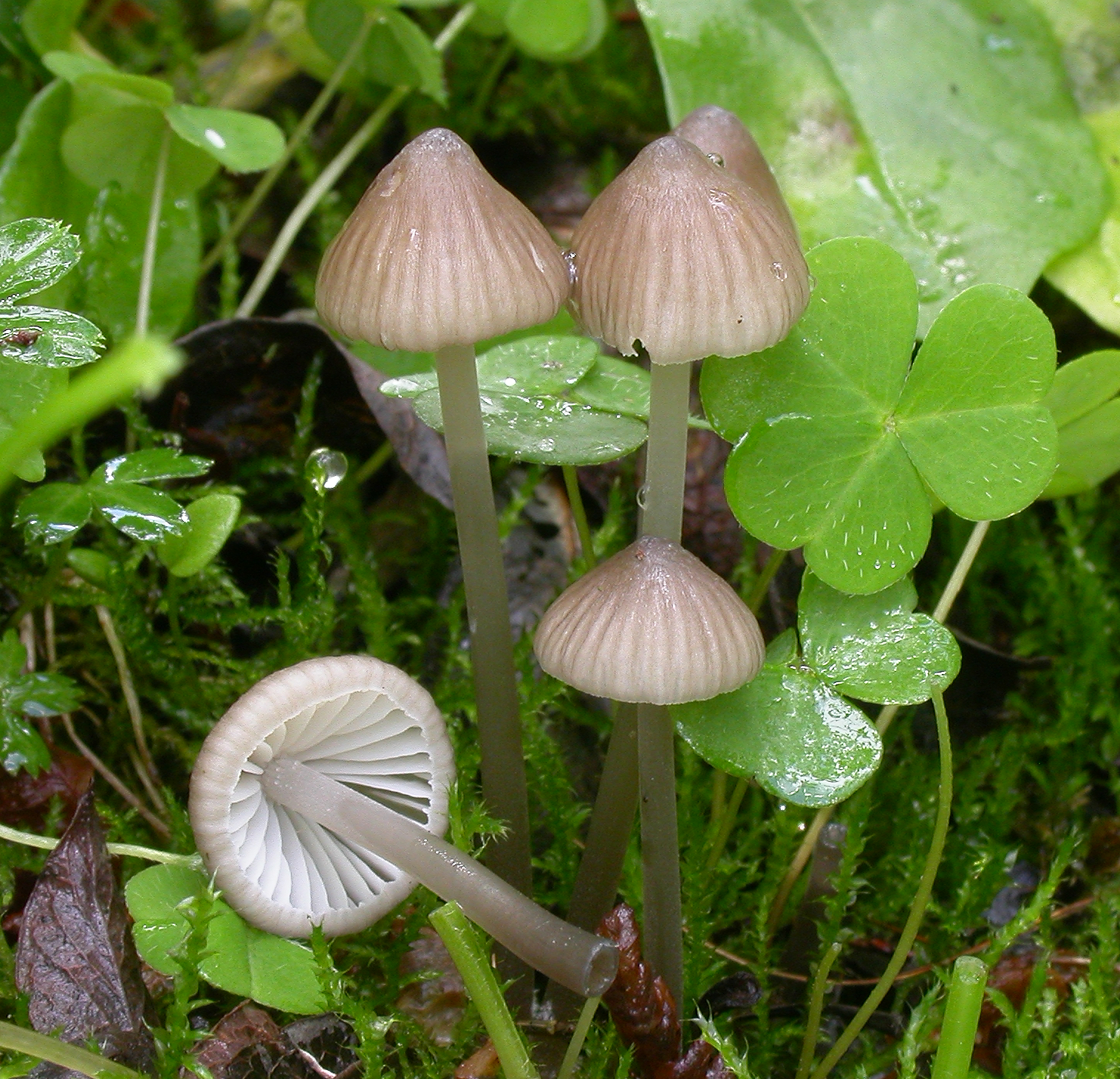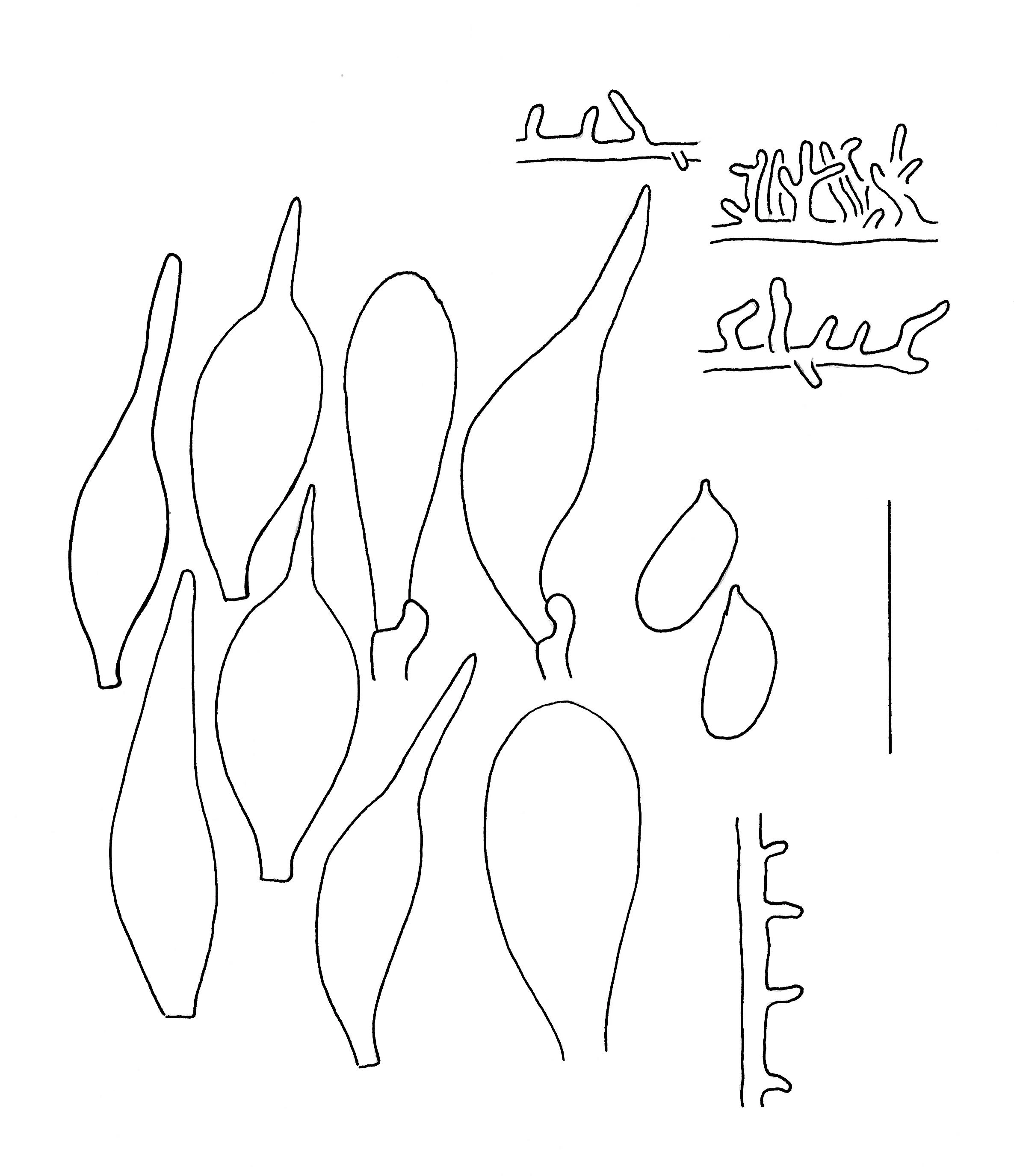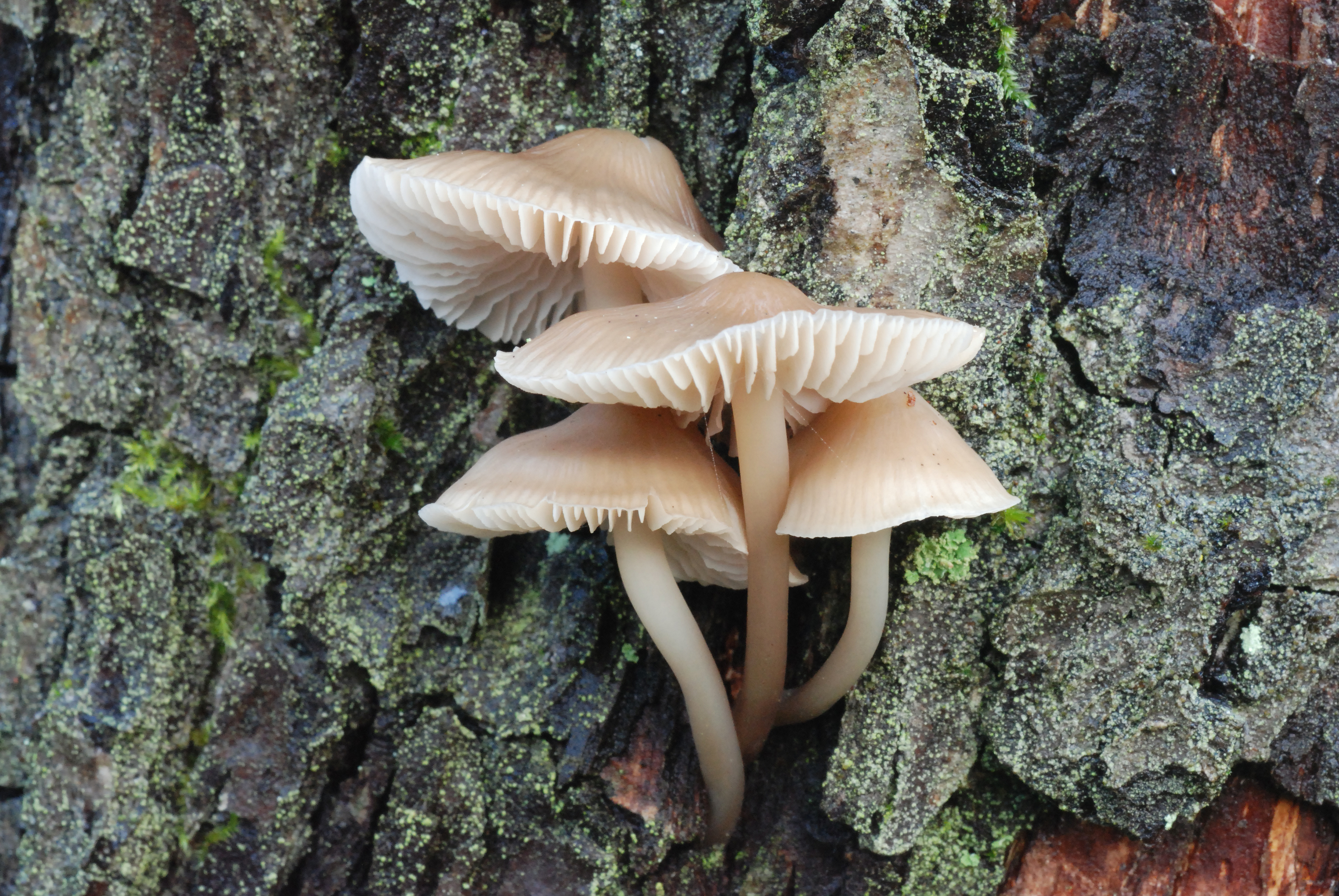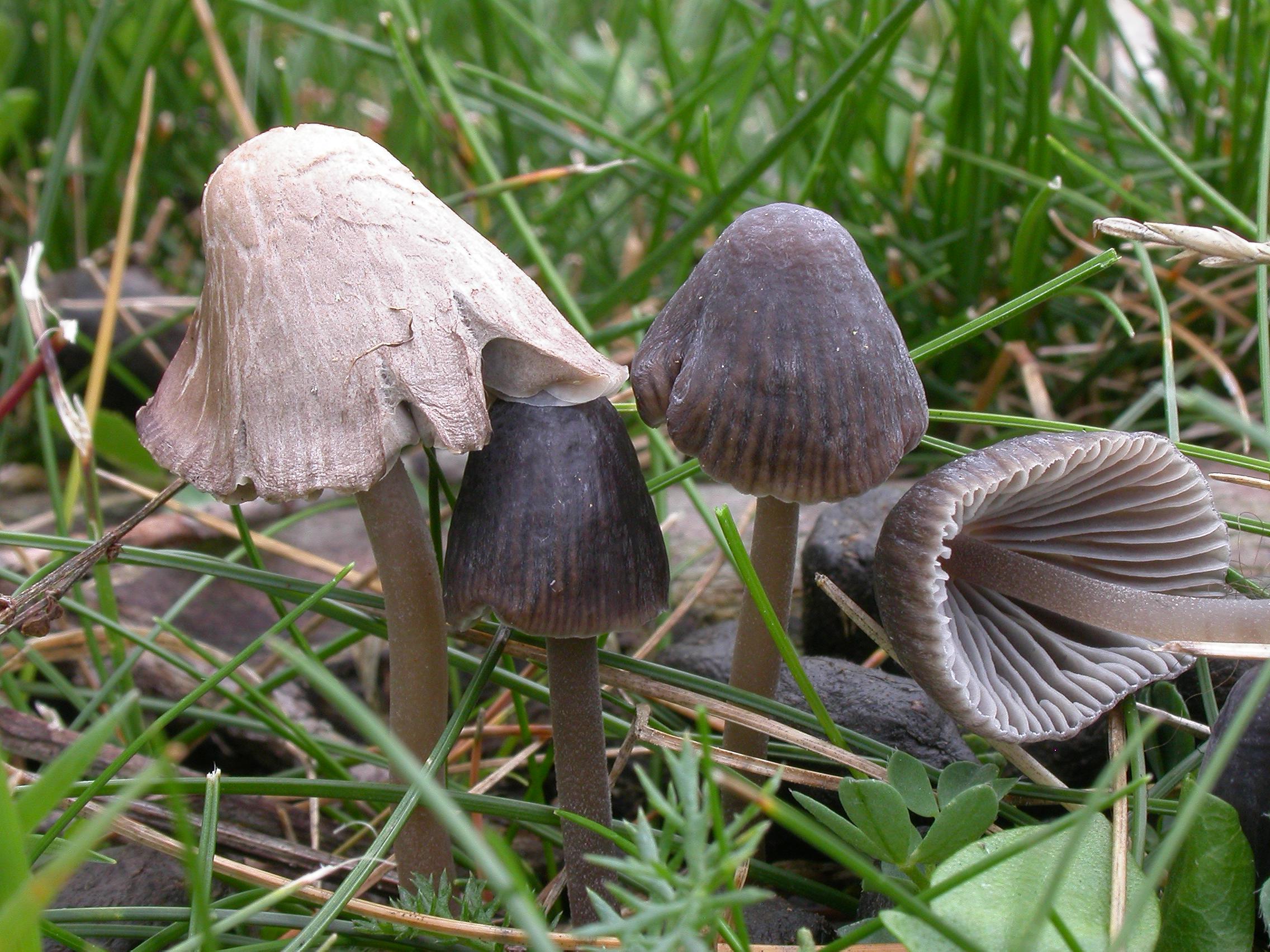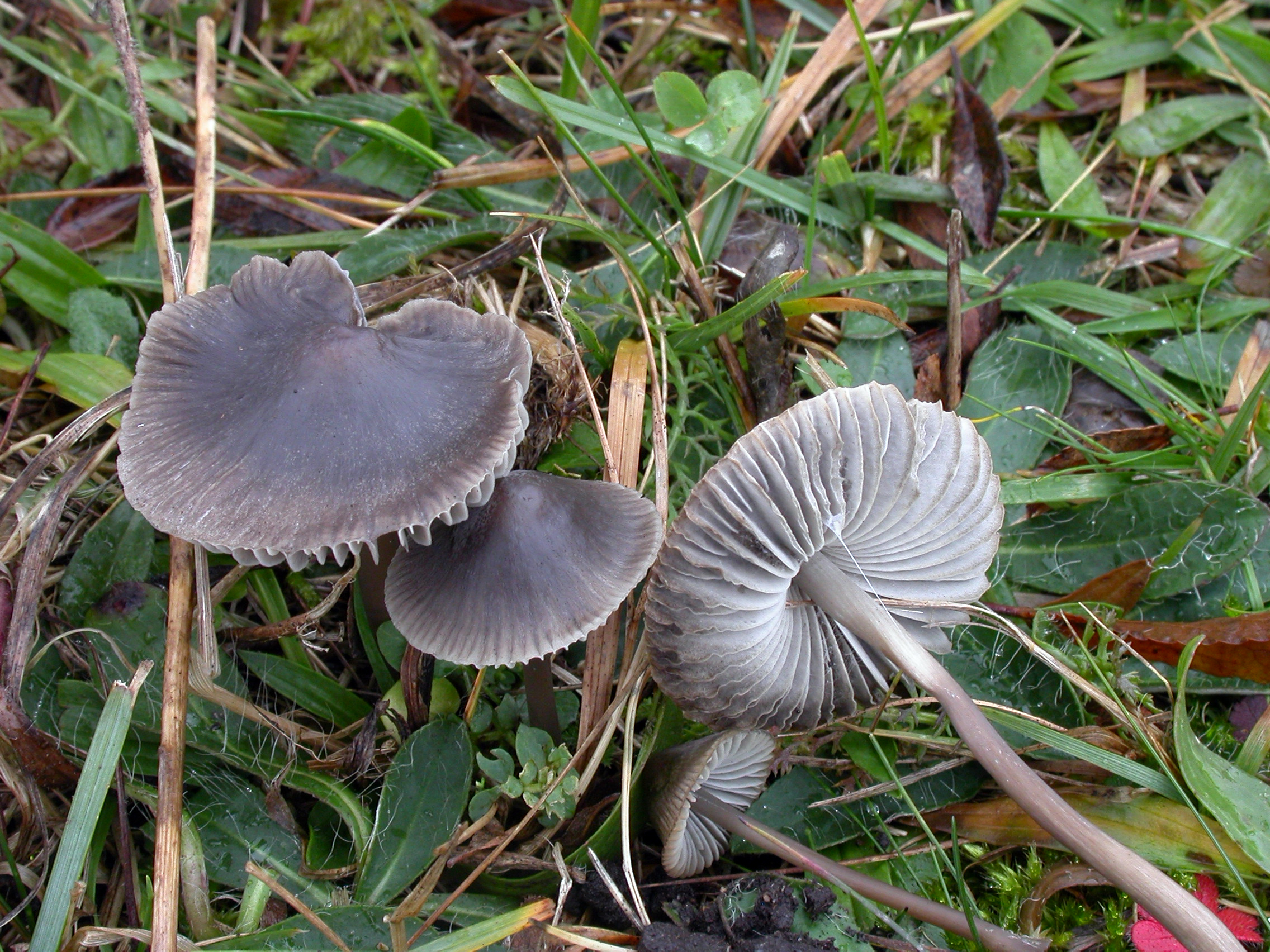Mycena abramsii
Mycena abramsii
Description
Cheilocystidia, hyphae of the pileipellis, spores and hypha of the cortical layer of the stem.
Cap 10-40 mm across, parabolical to conical, flattening with age, with or without a low umbo, translucent-striate, sulcate, pruinose, glabrescent, grey-brown to somewhat darker brown. Gills 15-27 reaching the stem, ascending, adnexed to adnate, smooth to somewhat rugulose to strongly veined, becoming intervenose, white to greyish with paler edge. Stem 30- 90 x 1-2(-4) mm, fragile, cylindrical or broadened downwards, hollow, pruinose above, glabrous below, shiny when drying; when very fresh exuding a watery fluid when cut, pale grey, dark grey-brown to dark sepia brown, usually somewhat darker below and whitish grey at the apex, pallescent with age, the base densely covered with long, coarse, whitish fibrils. Odour more or less nitrous, fleeting or sometimes absent. Basidia 25-36 x 8-9 µm, clavate, 4-spored. Spores 7.5-13 x 4-6.5 µm, Q = 1.6-2.1, Qav = 1.8-1.9, elongated to cylindrical, amyloid. Cheilocystidia 25-55 x 10-14 µm, fusiform, clavate, subcylindrical, more rarely sublageniform, usually apically drawn into a slender neck or occasionally with two or more necks. Pleurocystidia similar. Lamellar trama dextrinoid. Hyphae of the pileipellis 2-4 µm wide, covered with scattered to crowded, simple to branched excrescences, 2-10 x 1-2 µm, which tend to become gelatinized. Hyphae of the cortical layer of the stem 2-2.5 µm wide, sparsely diverticulate, terminal cells hard to find, uninflated, diverticulate. Clamp connections present in all tissues.
Ecology and distribution
Growing singly, in small groups or subfasciculate on mostly woody debris of various deciduous trees or on moss-covered trunks of living trees. Occasionally also found on coniferous debris. Occuring from early summer, but can also be found well into the autumn. It is a common, although often overlooked species, within the area covered, apparently with a preference for better (alkaline) soils. It is not uncommon among Salix shrubs in the alpine region.
